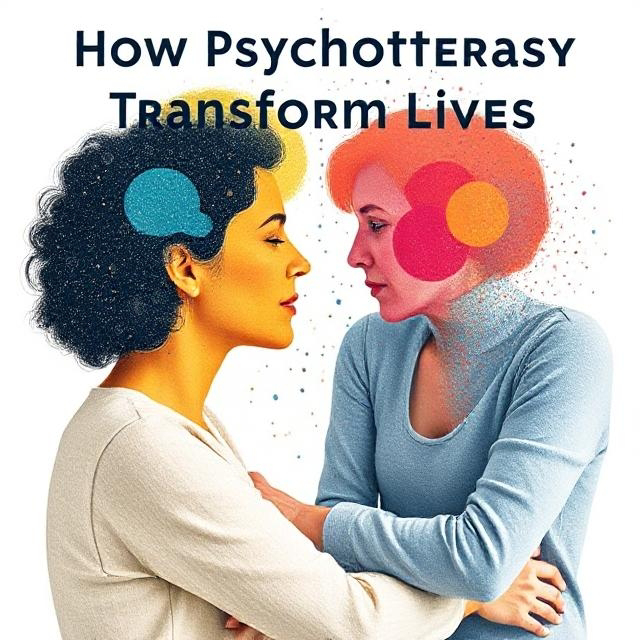Psychotherapy is often described as a journey of self-discovery and healing, but what actually happens in the brain and mind that leads to lasting change? The answer lies in the mechanisms of change—the psychological and neurological processes that help people transform their thoughts, emotions, and behaviors. This article explores these mechanisms with real-life-inspired case studies to illustrate how therapy works in practice.
1. Changing the Mind: Cognitive Restructuring
Case Study: Rewriting the Story of Self-Doubt
Client: Ananya, a 28-year-old marketing executive struggling with imposter syndrome.
Therapeutic Approach: Cognitive-Behavioral Therapy (CBT)
Mechanism of Change: Cognitive restructuring—challenging and replacing irrational beliefs.
Process: Ananya constantly felt like a fraud at work, despite receiving praise. In therapy, she kept a "thought diary," recording negative self-talk and the evidence for and against these thoughts. Over time, she learned to reframe her beliefs, replacing "I'm not good enough" with "I have worked hard to be here."
Outcome: After three months, Ananya reported greater confidence and reduced anxiety at work.
2. Emotional Healing: Processing and Regulation
Case Study: Overcoming the Shadows of Trauma
Client: Raj, a 35-year-old veteran with PTSD.
Therapeutic Approach: EMDR (Eye Movement Desensitization and Reprocessing)
Mechanism of Change: Emotional processing and desensitization through structured exposure.
Process: Raj experienced flashbacks of combat. His therapist guided him through EMDR sessions where he recalled traumatic memories while engaging in guided eye movements. This reduced the emotional charge of his memories, helping him process them with less distress.
Outcome: After eight sessions, Raj reported fewer nightmares and a greater sense of control over his emotions.
3. Rewiring the Brain: Behavioral Change
Case Study: Conquering OCD Through Exposure
Client: Priya, a 22-year-old college student with obsessive handwashing habits.
Therapeutic Approach: Exposure and Response Prevention (ERP)
Mechanism of Change: Breaking compulsive cycles through gradual exposure.
Process: Priya feared germs and washed her hands 50 times a day. Her therapist introduced controlled exposure—touching a doorknob and resisting the urge to wash her hands immediately. Slowly, she learned that her anxiety subsided even without the ritual.
Outcome: Within ten weeks, Priya reduced her compulsions by 80% and felt less consumed by fear.
4. The Power of Connection: Interpersonal Change
Case Study: Healing Through Relationships
Client: Kabir, a 40-year-old struggling with loneliness and difficulty forming close relationships.
Therapeutic Approach: Psychodynamic Therapy
Mechanism of Change: Building secure attachments and understanding past relational patterns.
Process: Kabir discovered in therapy that his fear of intimacy stemmed from a neglectful childhood. Through the therapeutic relationship, he experienced trust and safety, allowing him to practice vulnerability.
Outcome: Kabir formed meaningful friendships and started dating again, feeling more emotionally available.
5. Meaning-Making: Finding Purpose in Life
Case Study: Coping with Loss
Client: Meera, a 50-year-old grieving the loss of her husband.
Therapeutic Approach: Existential Therapy
Mechanism of Change: Reconstructing meaning in life after loss.
Process: Meera felt lost without her husband. Therapy helped her explore questions of identity and purpose, guiding her toward reconnecting with passions like art and community service.
Outcome: Over time, Meera found fulfillment in creative expression and mentoring young artists.
The Science Behind the Change
Research in neuroplasticity shows that therapy physically rewires the brain. Cognitive restructuring strengthens rational thought patterns, emotional processing reduces amygdala hyperactivity (linked to fear), and behavioral changes create new, healthier habits.
Each therapeutic approach utilizes different mechanisms, but the ultimate goal remains the same: helping individuals live more fulfilling lives.
Final Thoughts
Psychotherapy is not just about talking—it’s about transforming how we think, feel, and behave. Whether it's rewriting negative beliefs, healing from trauma, overcoming compulsions, or finding deeper meaning, change is possible when the right mechanisms are activated.
Do you see yourself in any of these stories? Therapy could be the key to unlocking your transformation.
Would you like to explore a specific therapy in more depth? Let’s continue the conversation.













.png)









.jpg)



No comments:
Post a Comment